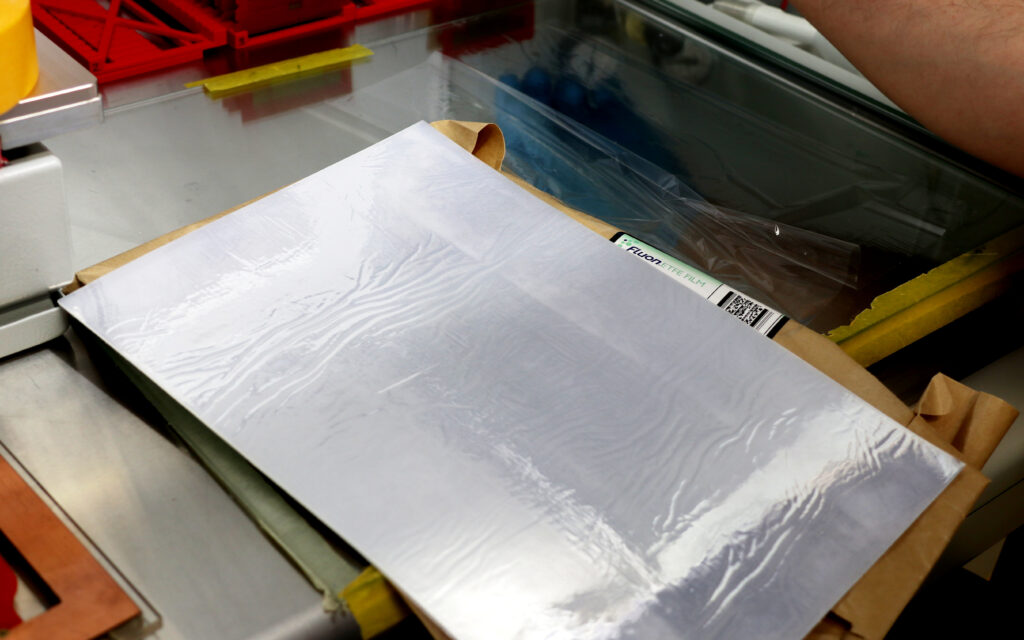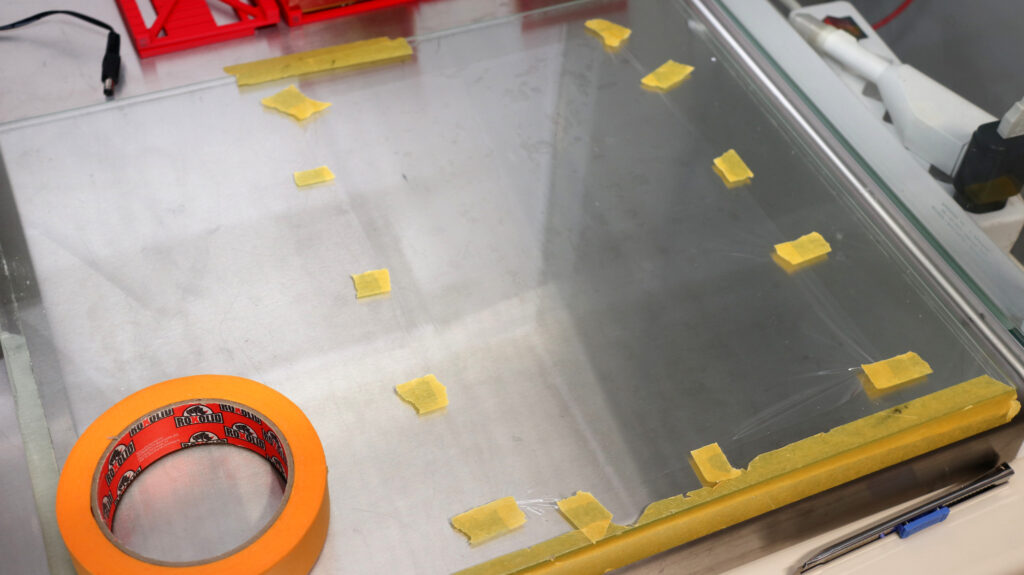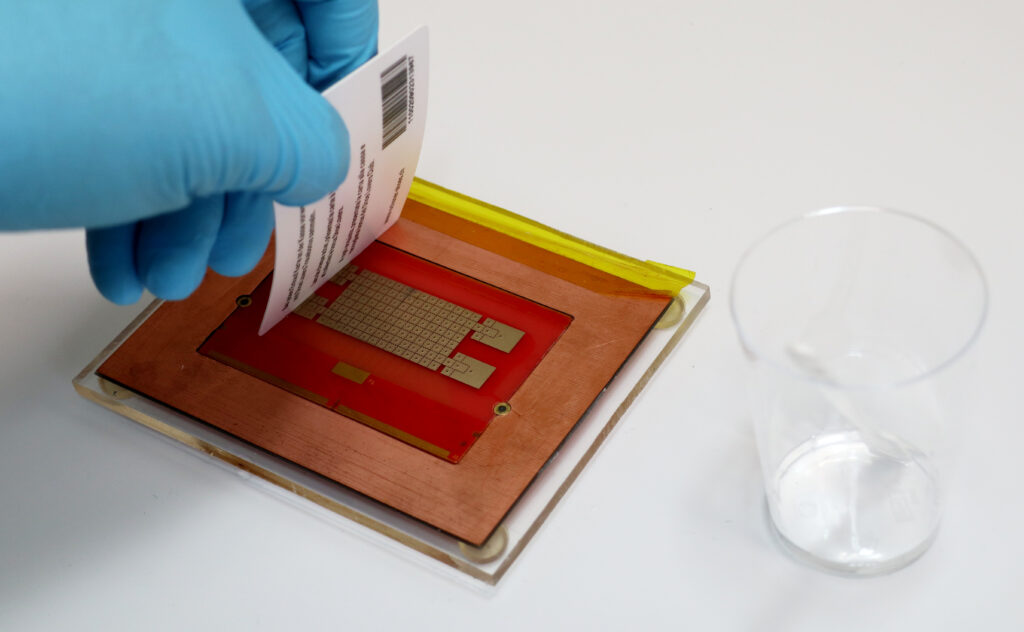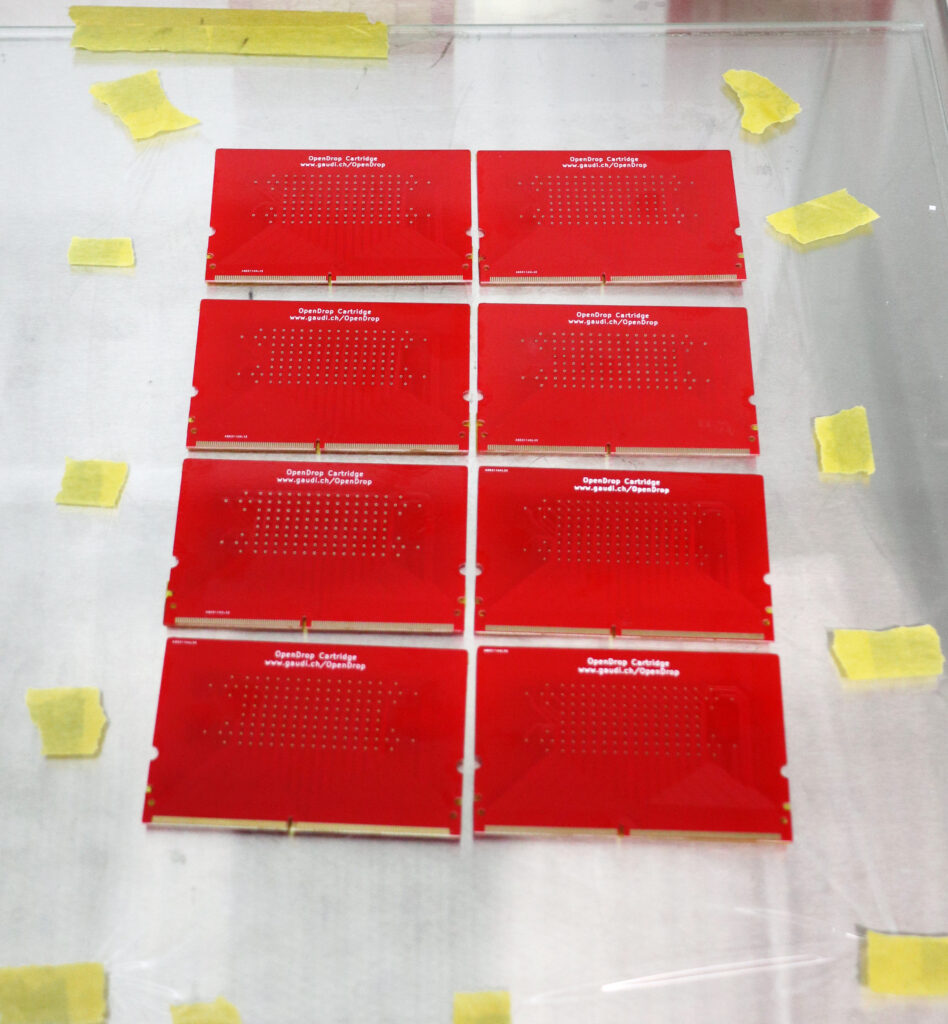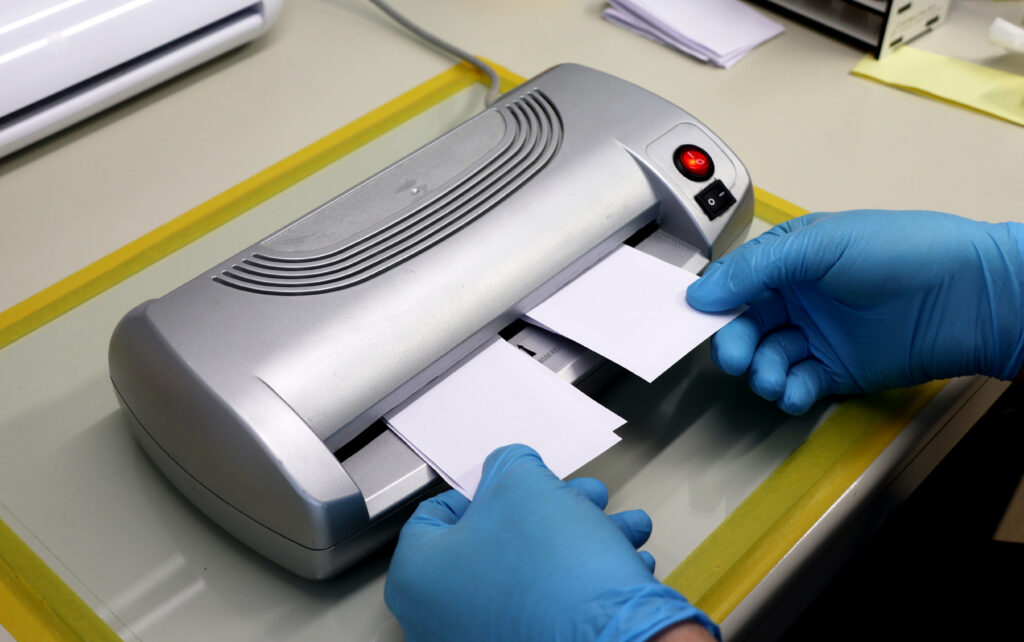Process overview
2. Laminating and Coating Hydrophobic Film
| ID | 2.1. | |
| Title | Preparing PDMS adhesive | |
| Scope | Prepare PDMS as adhesive for dielectric film | |
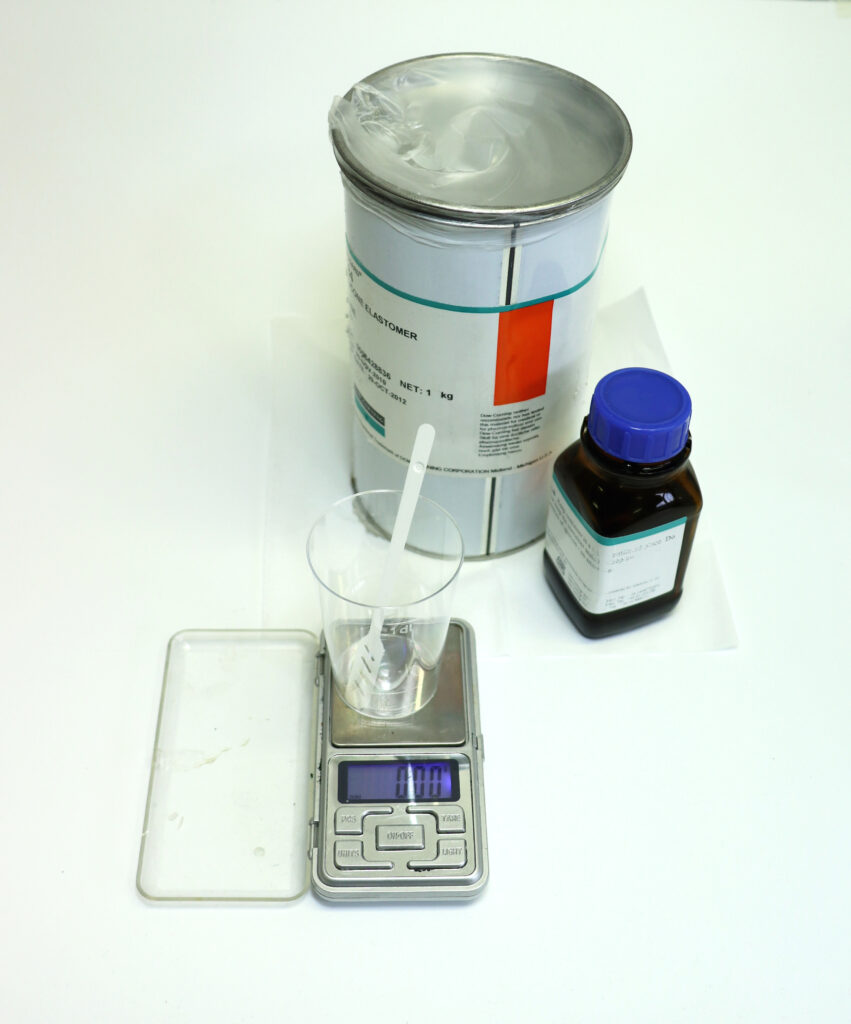
Materials
- DC 184, CH DE – Silicone Elastomer Kit, 1.1kg, Dow Corning
- Mixing beaker
- Micro-Balance
Step-by-step
- Add 10 gram of Part A (base) to beaker
- Add 1 gram of Part B (Curing agent) to beaker (ratio 1:10) (fig 1)
- Stir well using plastic spatula (fig 2)
- Put beaker into desiccator and put under vacuum for 2 minutes to degas (fig 3)
Pictures / Videos
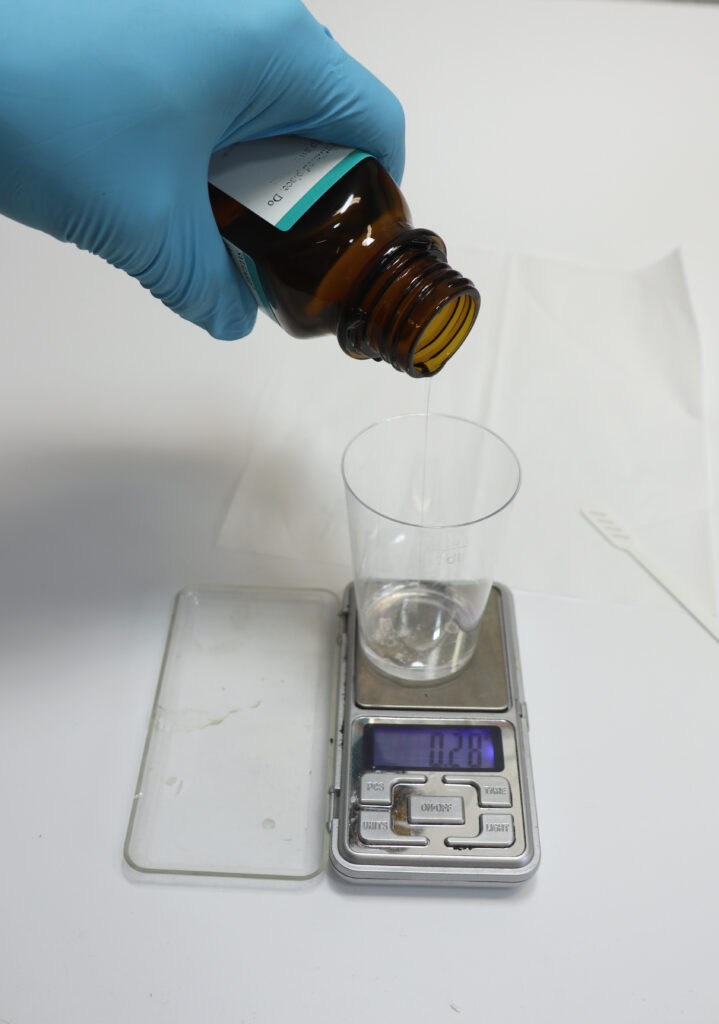
fig 1 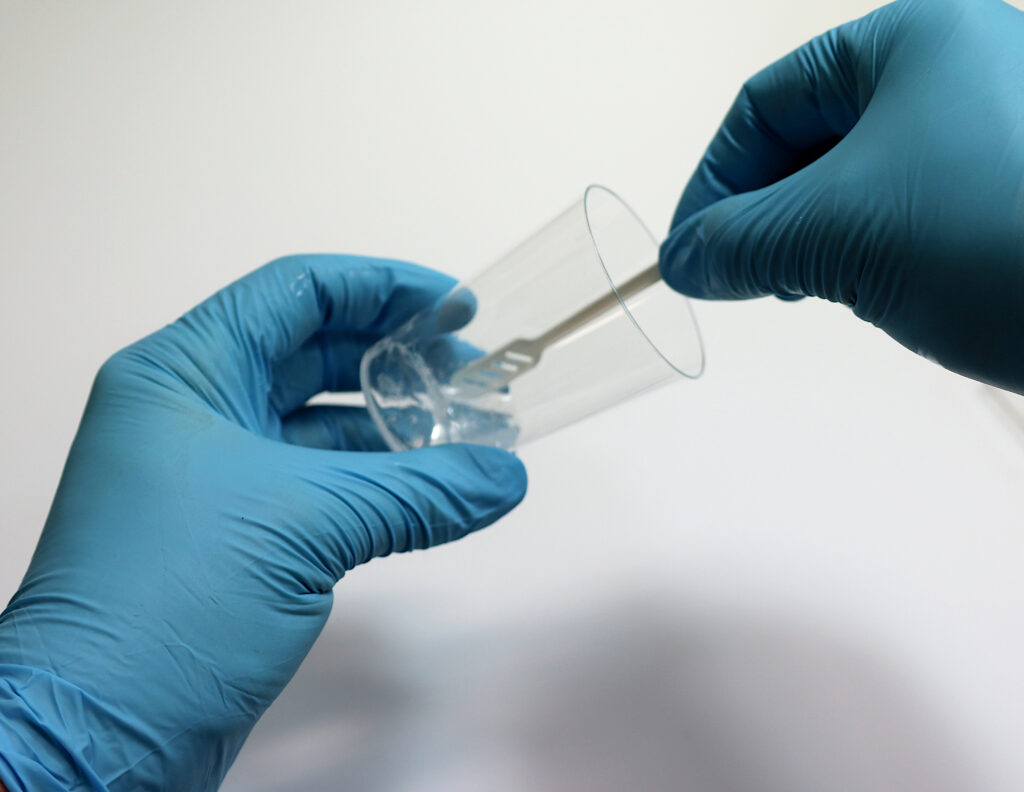
fig 2 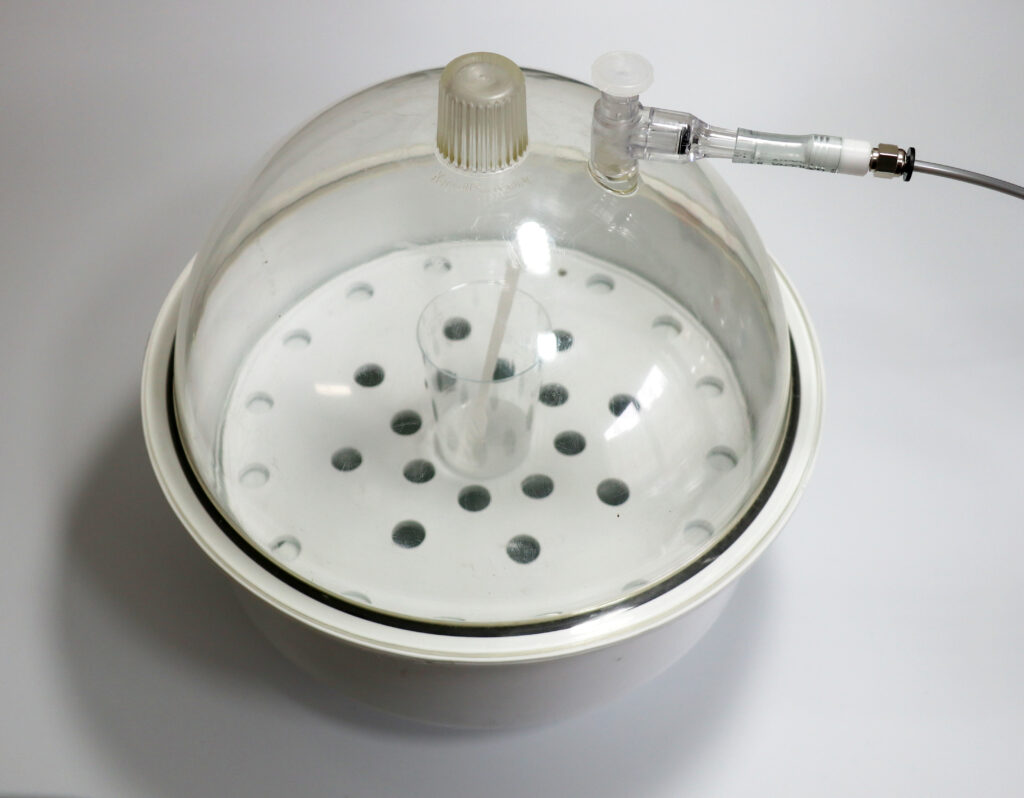
fig 3
Files / Templates:
| ID | 2.2. | |
| Title | Stretching dielectric film | |
| Scope | Prepare dielectric film (ETFE) by stretching it flat | |
| Buy | Shop link for ETFE Film, 12um |
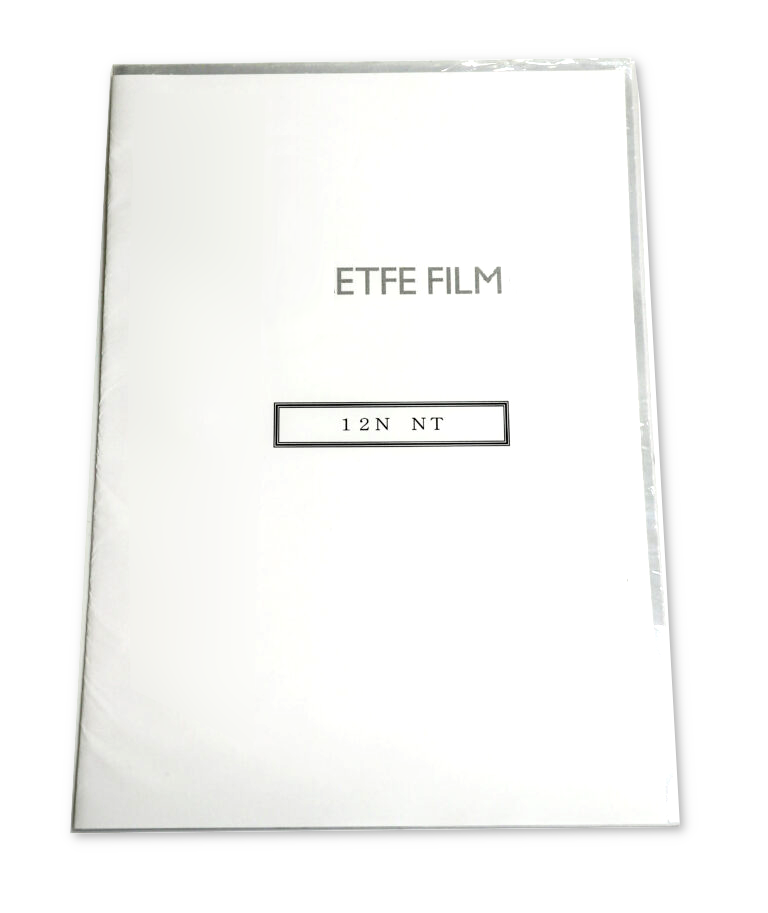
Materials
- AGC Fluon ETFE Film, 12 um, with corona treatment
- Masking tape
Step-by-step
- Carefully remove one layer of ETFE film from package and lay down flat (on glass surface) with corona treated side facing up (fig 1)
- Stretch film evenly by attaching it to surface using masking tape (fig 2)
Pictures / Videos
Files / Templates:
| ID | 2.3. | |
| Title | Priming Electrode boards | |
| Scope | Apply priming to masked electrode boards and protect with tape | |
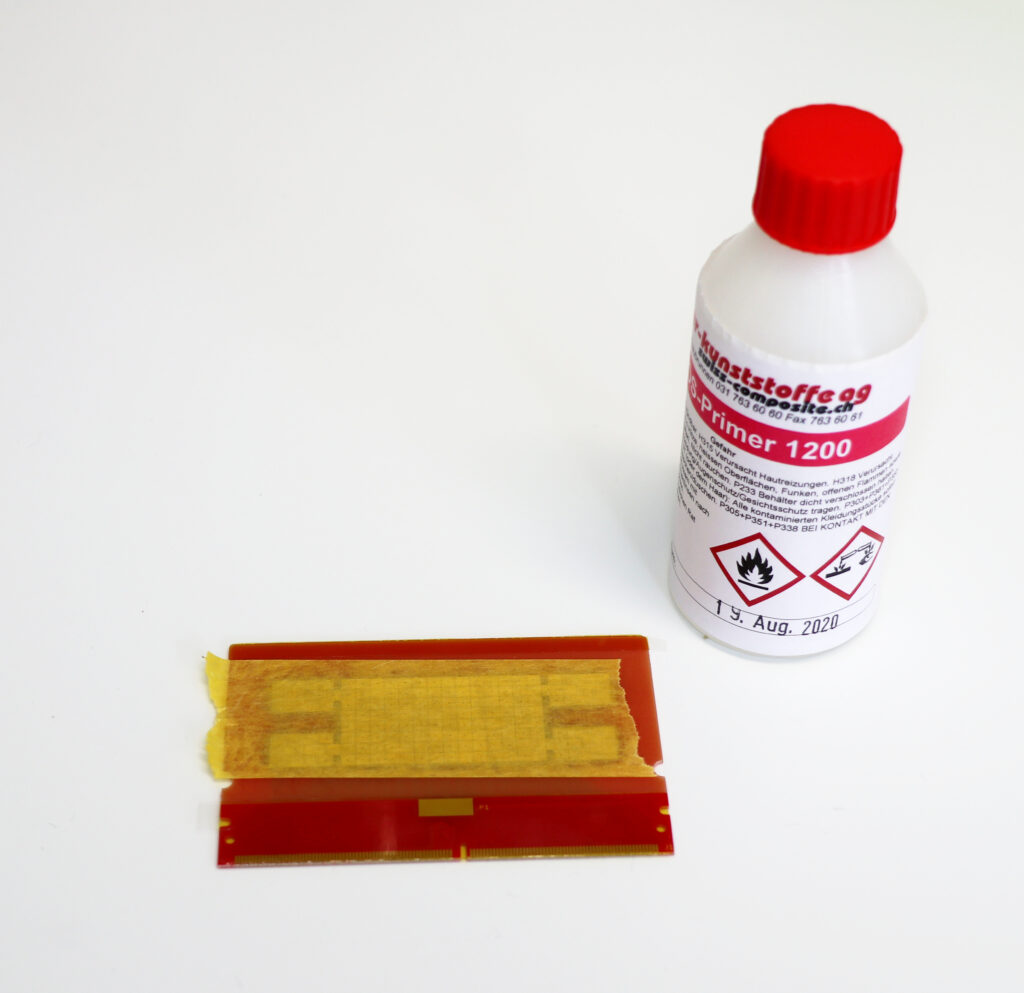
Materials
- Electrode board with makings applied
- DOW CORNING® 1200 OS Primer
(Primer for silicone elastomers, silicone foams and adhesives/sealants)
Step-by-step
- Measure 5 ml of primer into buffer container (always use buffer container to prevent contamination and product deactivation)
- Apply one coat of primer to electrode board using a lint free paper towel (fig 1)
- Allow allowed to air dry for 15 minutes
- Protect the surface by applying a masking tape over it (fig 2).
Laminate electrode board soon after priming (< 6 hours)
Pictures / Videos
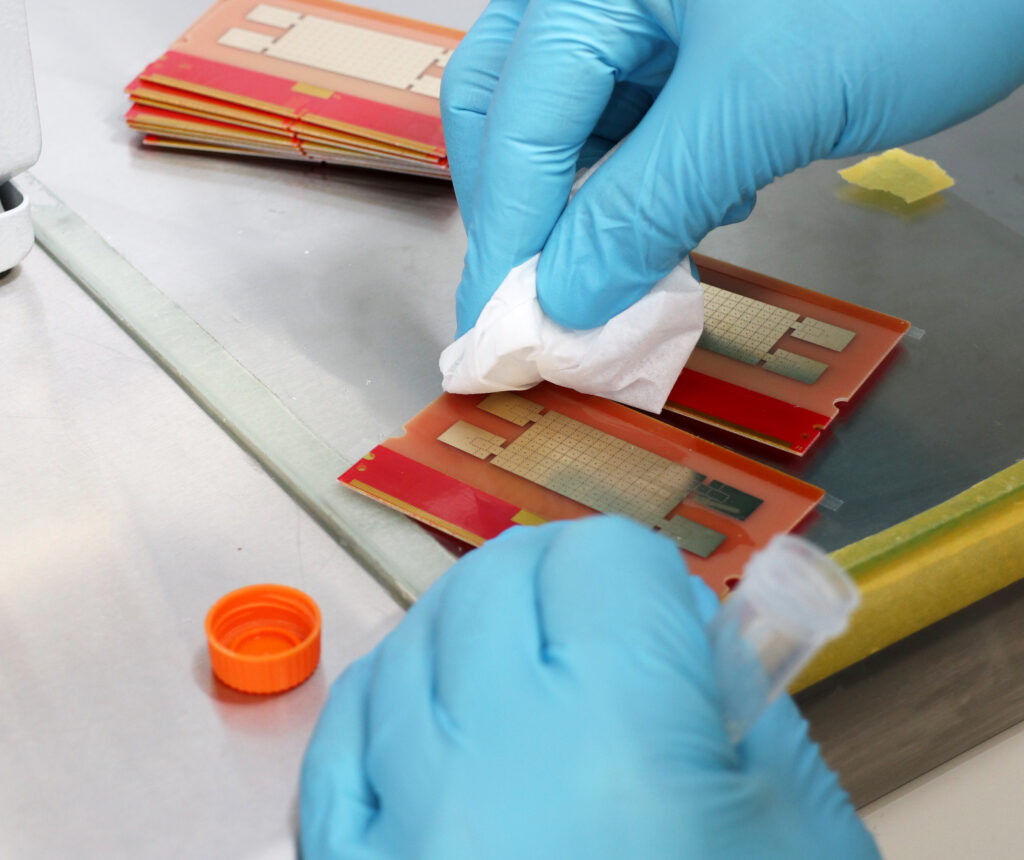
fig 1 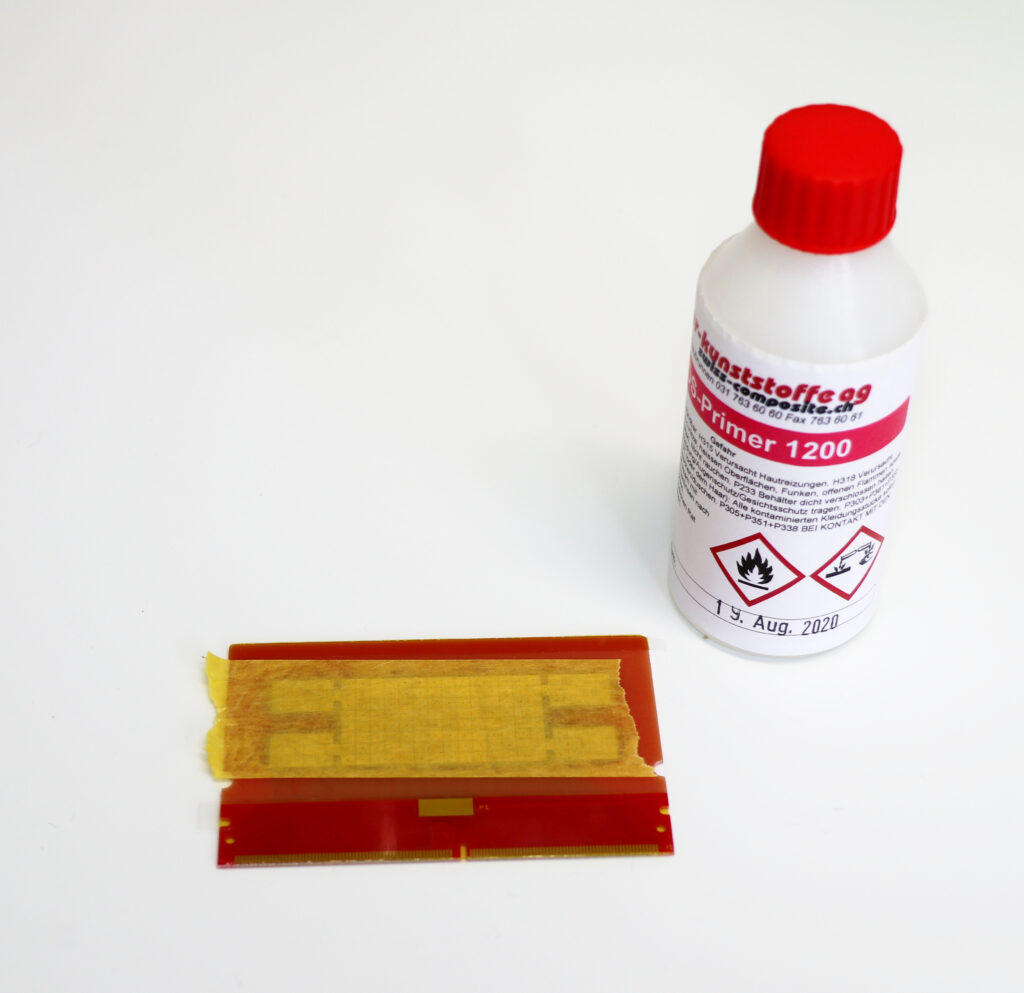
fig 2
Files / Templates:
| ID | 2.4. | |
| Title | Laminating dielectric foil with PDMS | |
| Scope | Apply PDMS adhesive to electrode board and laminating ETFE foil | |
| Buy | Shop link for Laminated and Coated Electrode Board |
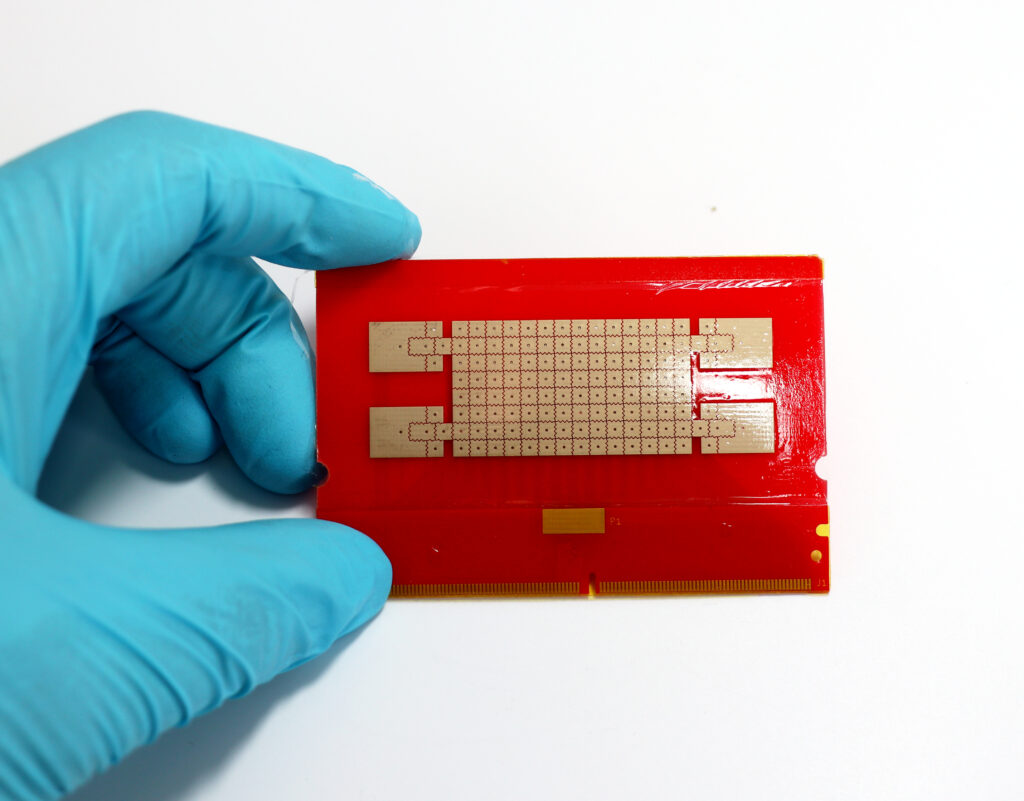
Materials
- Electrode board with makings and priming
- Mixed PDMS adhesive
- Stretched ETFE foil
Step-by-step
- Remove protective masking tape from electrode board
- Apply a small amount of PDMS adhesive directly to the electrode array
- Spread the adhesive evenly using a squeegee.
- Remove all excess adhesive in a second pass with the squeegee. There should be as little adhesive on the surface as possible (just impregnated)
- Remove liners from top and bottom masking lines
- Apply electrode board to stretched ETFE film. Be careful when putting it down to not move and introduce wrinkles. Press down.
- Clean backside of electrode board from any excessive adhesive
- Cut out ETFE film around the electrode board to release it from the sheet.
- Wrap electrode baord with film applied to it into a folded piece of paper
- Pass the board wrapped in paper through a laminator (Laminator type: TCM, Temperature: 130°C)
- Let the PDMS adhesive dry for 12 hours (covered with aluminum foil to prevent dust and charges)
Pictures / Videos
Files / Templates:
| ID | 2.5. | |
| Title | Coating film on electrode board | |
| Scope | Applying a hydrophobic coating to the film on the electrode board | |
| Buy | Shop link for Laminated and Coated Electrode Board |
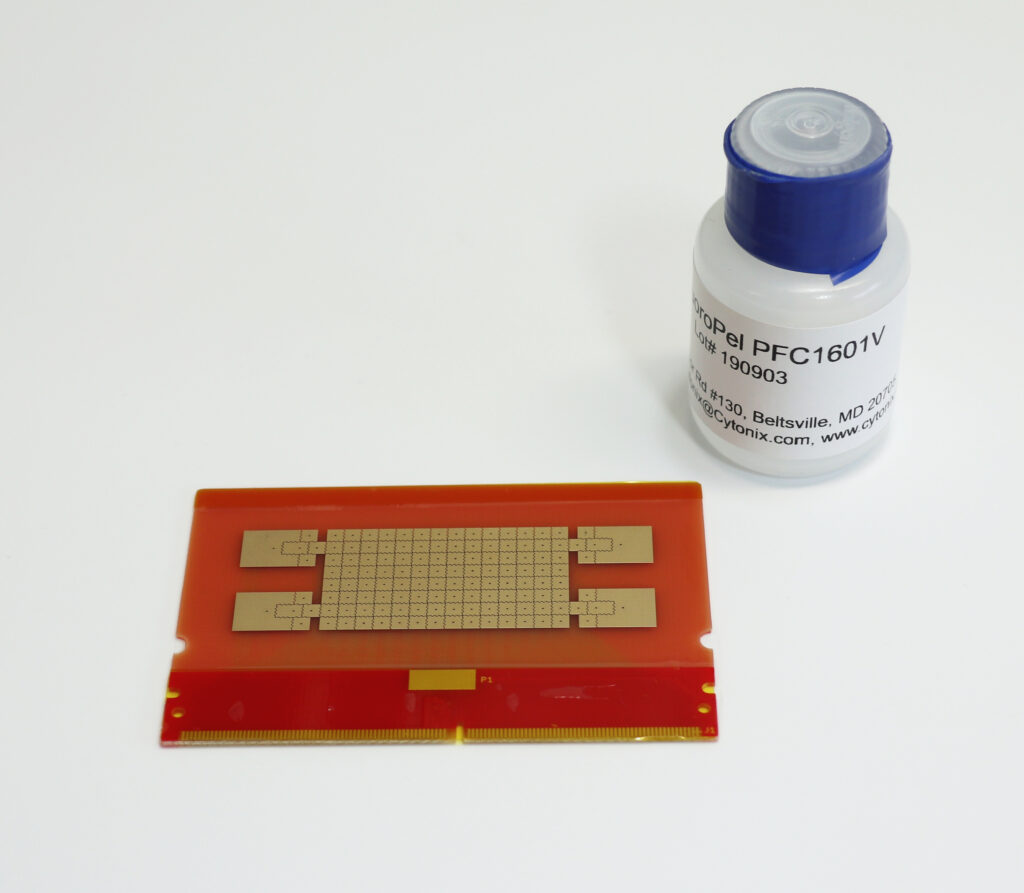
Materials
- Electrode board with laminated film
- Hydrophobic coating material (FluoroPel PFC1601V)
Step-by-step
- Put the electrode board on a spin-coater with vaccum chuck
- Apply 60 ul of FluoroPel onto the film on one edge of the board (fig 1)
- Spread the coating evenly over the whole surface of the electrode array using a plastic squeegee (fig 2)
- Spin at 2500 rpm for 30 seconds (fig 3)
- Cure on hot plate at 90°C for 20 minutes (fig 4)
- Store in board rack for further use
Pictures / Videos
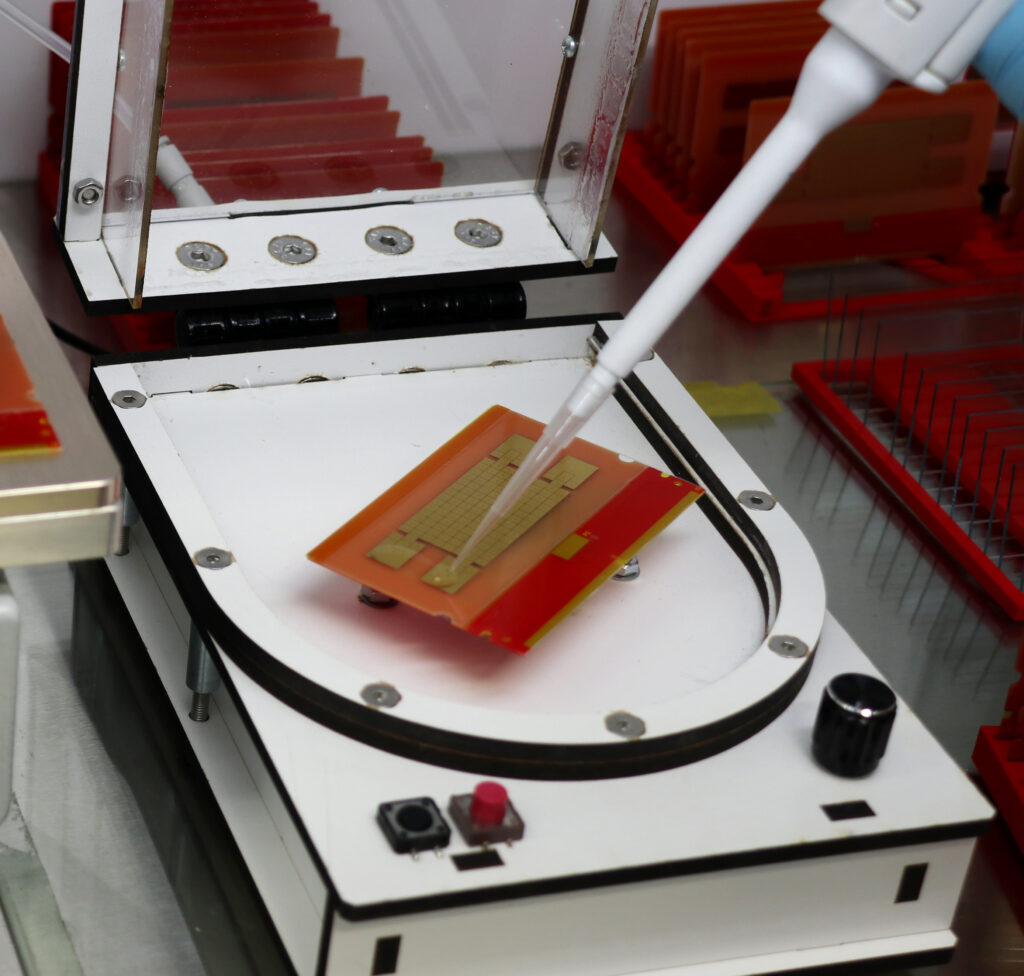
fig 1 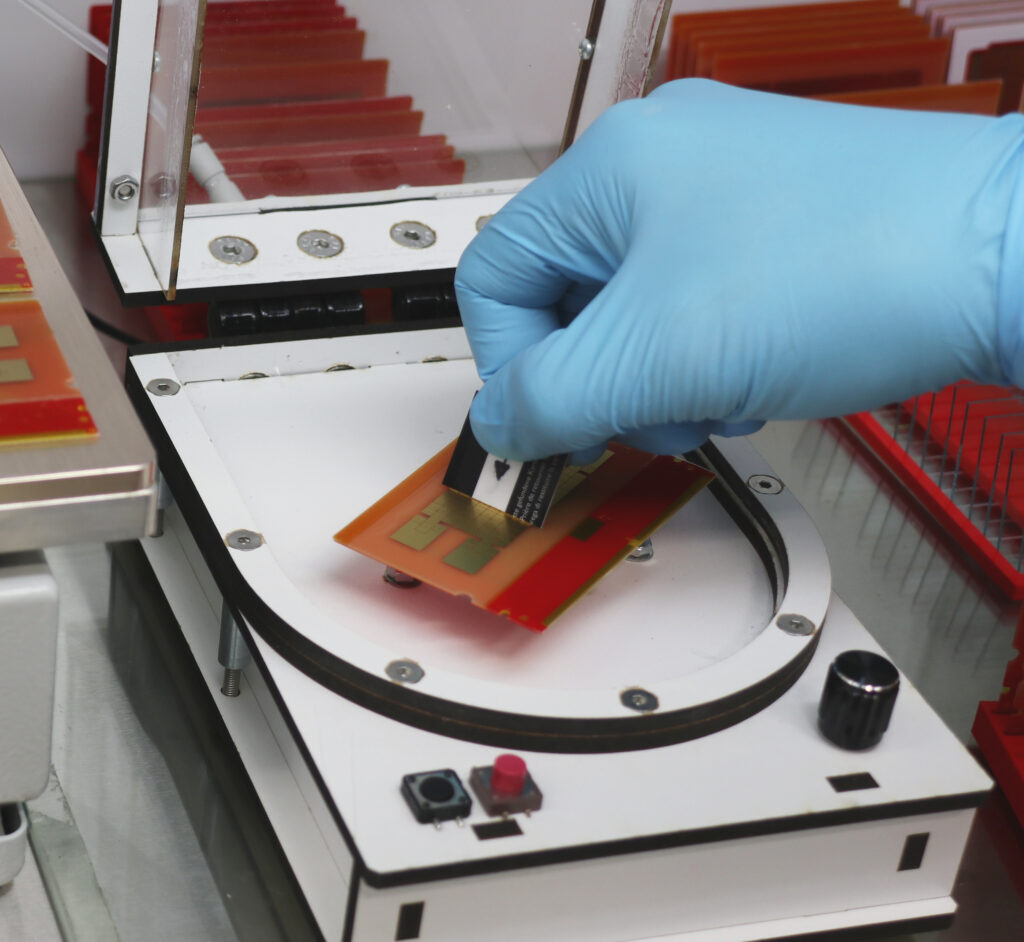
fig 2 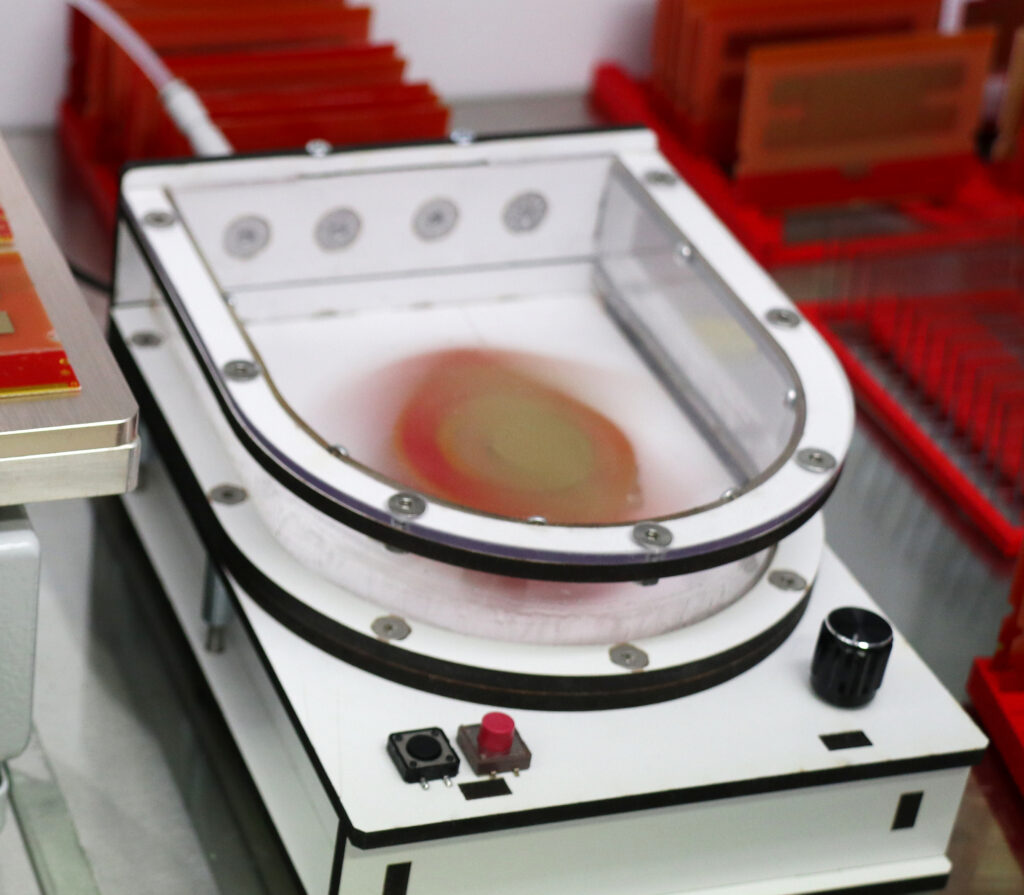
fig 3 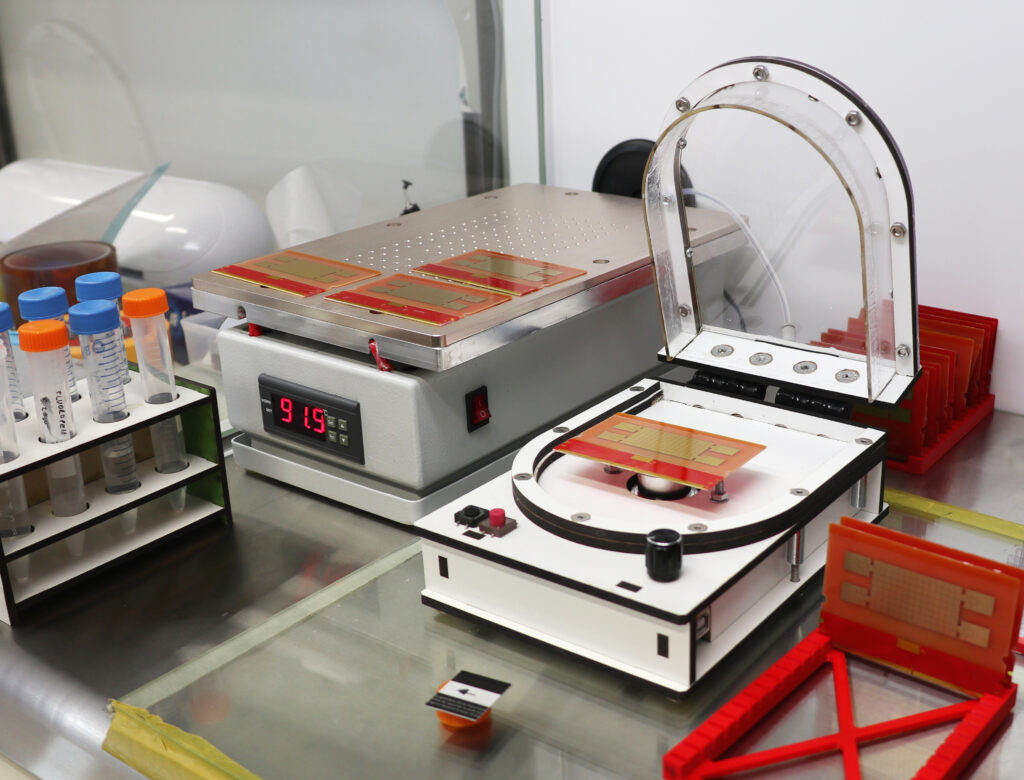
fig 4
Files / Templates:

